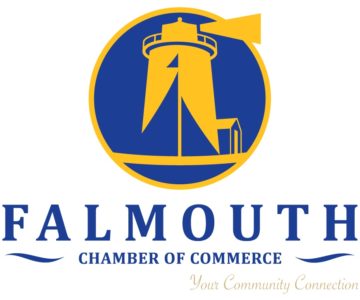By Douglas Karlson
Business owners who want to grow their business could take a lesson from Stewart Painting, which has offices in Hyannis and Hingham. It’s a business that has turned away from the model followed by most local painting contractors and developed a company culture that promotes growth, quality service and loyal employees.
“I always say we’re a continuously improving company. There are things we do today that we didn’t do yesterday. You’re either getting better or you’re dying,” says the company’s owner, Sheldon Stewart.
Stewart founded the company more that 30 years ago, after having worked his way through college as a painter. But he wanted to do more that run a small painting operation. “I wanted to develop a business that provided a painting service.”
At the time, he recalls most painting contractors on the Cape were small outfits, with just one or two trucks. He realized that to grow beyond that he would have to develop a system that would support growth, and build his brand.
Stewart didn’t know how to do that, but he had enough sense to know that other people did. He turned to business coaches and consultants for their advice and expertise. It’s an approach he’s followed ever since.
Over the years, the Stewart Painting gradually shifted from Stewart personally handling all facets of managing the operation to greater reliance on middle managers, crew leaders and salespeople who have taken the company to the next level. Two years ago, the company expanded with an office in Hingham.
To grow, Stewart realized he had to focus on both operations and culture.
Operational efficiency
From an operational approach, efficiency and digital communication are stressed. It’s a paperless office. Flat screens mounted on the wall display flow charts tracking projects. Digital maps show the location of jobs.
The company uses Smartsheets to efficiently manage those jobs from initial estimate to completion. Crew leaders use iPads to track their crews and take job photos throughout so both management and customers can see progress.
“Buyers want to buy now,” says Stewart, and their system, with crew leaders on the road connected by iPads, allows the company to respond immediately to customer requests for quotes. Stewart Painting vehicles are also tracked using GPS, allowing work to be completed quickly and efficiently.
Stewart notes that some companies pride themselves on being booked for eight weeks in advance. To Stewart, such backlogs indicate inefficiency and lack of resources. He prefers jobs to be estimated, approved and completed as quickly as possible. “We want to never be booked more than three weeks,” he says.
Metrics play an important part is Stewart Painting as the company sets goals for all facets of its operations, from sales to the number of crews on the road making estimates. The call center tracks the origins of all leads, so they can determine where to best allocate their marketing dollars.
Most of those marketing dollars are dedicated to radio ads, email blasts to customers and prospect lists, and signs at job sites. Stewart also participates in a handyman hotline on the radio, which enhances the company’s reputation. On the digital front, Stewart Painting doesn’t pay for improved Google search placement, but has invested with a web designer, with whom Stewart meets quarterly to make sure the company website is optimized for search engines.
A Culture of Learning
Over the years, coaches have helped Stewart set and achieve his goals. They helped him achieve his goal of increasing from $1 million in annual sales to $2 million, and from there to the company’s current $4.5 million in annual sales. Stewart’s goal now is to reach $8 million over the next five years, and to increase his workforce from 50 to 100 people.
To that end, Stewart meets monthly with his business coach, Nolan Consulting. “They’ve helped me grow. The super-important part is who you surround yourself with. If I’m the smartest person in the room, I’m doing something wrong.”
He says he prefers an ongoing business coach to retaining consultants on a project by project basis “Consultants can sell you a bag of very expensive groceries, but when you get home there’s nothing you want to eat,” he says.
In addition to a professional business coach, Stewart is an avid reader of business management books and maintains a “to read” list of books. “You have to open yourself up to new ideas to get better,” he says. “I think it’s a willingness to succeed beyond your own ability.”
He also stresses the importance of reaching out to fellow business owners for insight and guidance. “I think successful people want to share.” In that spirit, he tries to act as an ambassador of his own industry and help others.
His advice for other small business owners is to reach out to other organizations that are bigger and more advanced. “If you’re going to grow your business you can’t do it by yourself. You don’t have to pioneer success, you learn from others.”
One way the company has grown recently is by adding carpentry to the services it offers. The firm has gradually grown from two to six carpenters, and plans to add two more. In-house carpenters allows the company to make repairs that are required prior to painting, such as repairing rot, and also to complete finish carpentry before painting. “Customers like to have a one-stop shop,” he says.
Employee Relations and Training
Retaining a skilled workforce has been critical to Stewart Painting’s growth. What sets the firm apart from many companies, says Stewart, is that it offers full benefits, such as health insurance, vacation pay and overtime. Most other companies hire painters as sub-contractors. In other words, Stewart sends out W-2s, not 1099s.
While in theory a company that pays greater benefits would have to charge higher prices, Stewart Painting has been succeeding with its model for more than 30 years. “It’s difficult to develop a reputation based on price alone,” he says.
By having its own employees, Stewart Painting reduces turnover. The longest-service employee at Stewart Painting has worked there for 17 years.
To help retain its workforce, numbering about 53 at the height of the season and dropping down to about 40 from December through March, Stewart Painting has regular social gatherings to show its appreciation. The company offers a “First Friday Celebration” once a month, has a Bagel Tuesday tradition, and host events such as pub crawls in Hyannis and Plymouth when revenue goals are met.
Training also plays an important role in developing a skilled workforce and ensuring quality service. Stewart Painting offers a training academy for new employees, and for the public. Hiring is always a challenge for any company, including Stewart Painting. By having a formal training program, the company can attract new employees, equip them with the skills they need, and keep them motivated to stay with the company. Relying once again on metrics, the company knows exactly how many new employees it must hire every year.
“We can hire someone who was earning $12 an hour and had very little opportunity for advancement. You’re not born a craftsman, you’re born with a work ethic,” says Stewart. “We just want good people and we’ll train them.”
Pay raises come not as a result of longevity, but as employees master new skills and contribute more to the company’s success.
The training academy also offers a do-it-yourself training two to three times per year. Often, people attending realize a project is too much for them, and end up hiring Stewart Painting instead.
A Culture of Learning: Stewart Painting focuses on operations, employees, to reach growth goals





















